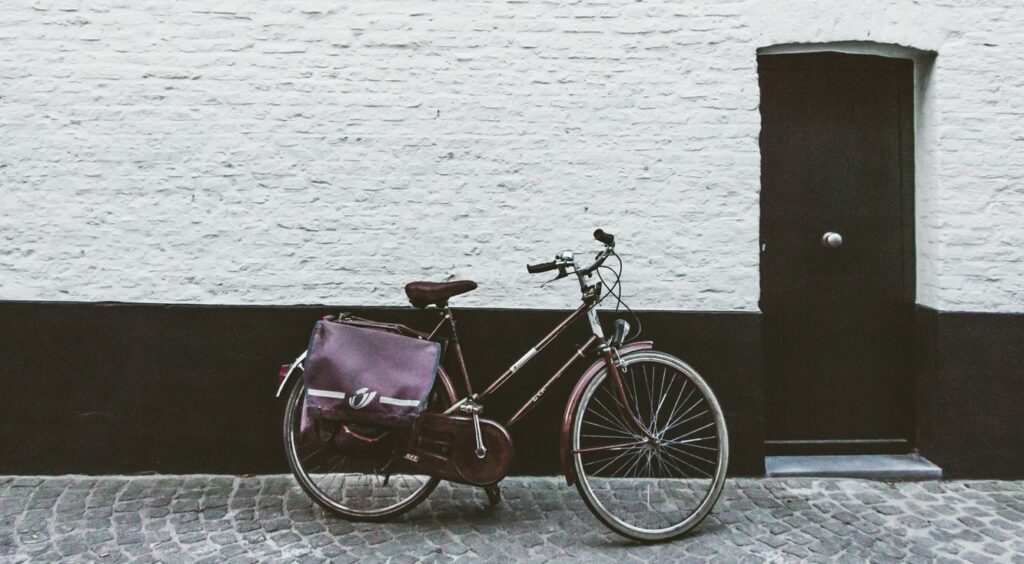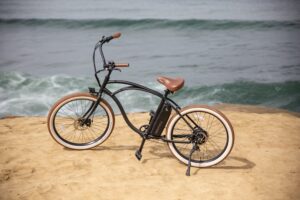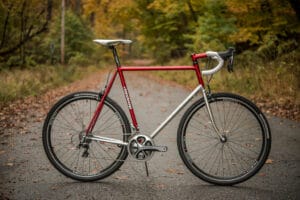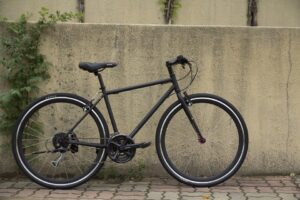There’s a lot to consider when looking for a bike that is ideal for commuting across different types of terrains and distances, but the number of choices available doesn’t have to make your head spin.
How to Choose an Urban Commuter Bike: Buyers Guide
QUICK SUMMARY: How to choose the ideal commuter bike for your journey

Table of Contents
There’s a lot to consider when looking for a bike that is ideal for commuting across different types of terrains and distances, but the number of choices available doesn’t have to make your head spin. It’s easier to narrow down your options if you keep a few criteria in mind. Ask yourself the following questions when prioritizing must-have features for the best commuter bike for your needs:
- What is the distance of my commute?
- What type of terrain will I be faced with?
- Should I buy a commuter bike for all seasons?
- How should I plan and prepare for the weather?
- Am I prioritizing price, comfort, safety, or all of the above?
- What are some biking accessories I should consider buying for my commute?
With these questions in mind, we’ll jump into explaining the best type of commuter bikes for the variety of needs you may have.
How to Choose a Commuter Bike
Different Types of Commuter Bikes
Importance of The Commute Distance
If your commute to work is long, you’ll need to prioritize comfort and safety when looking for the perfect commuter bike. Depending on your fitness level, a 10-mile bike trip may take you about an hour to complete. To stay comfortable, look for a light but sturdy frame, a comfortable bike seat or saddle, and a bike that allows for a traditional upright sitting position. The upright posture will help reduce the tension on your back and arms and allow for a more pleasant journey, well suited for everyday commuting. For commuters traveling longer distances, a performance road bike may be the better choice. The road bike is built for speed. with aerodynamic forward sitting position and a light frame, a high-end road bike can maintain speeds as high as 25-28mph on flat roads.
If you opt for a more traditional commuter bike, consider that the longer the distance of your commute, the more you will sweat. This is an inconvenience for anyone commuting to an office space, where you will likely not be able to shower. How much you sweat is as much a function of the distance you ride, as it is the weather and conditions you ride in, and your general fitness level. All things considered, you’ll have to get comfortable with sweating a little bit from time to time when commuting, but to minimize the amount, pack light, stay hydrated, and dress for the weather! If you’re just looking for the fastest and most sweat free way to get from point A to point B, you might consider an electric commuter bike instead.
A traditional commuter bike is designed with safety and stability in mind. The frames come in steel, aluminum, or carbon fiber form and tend to be heavier than road bikes. You can find commuter bikes that sport drop-down handlebars, and typical road bike components, or straight handlebars that have mountain bike groupsets. Which one you choose can depend on whether you prioritize speed over comfort.
If your commute is short and mostly covers flat roads, you may even consider a fixie commuter bike to save money without sacrificing for quality. Fixie bikes are fixed-gear bicycles, which means they only have one fixed gear for you to worry about. Apart from being less expensive than multi-geared bicycles, they are generally easier to maintain and have fewer issues on the road.
Terrain and Road Conditions
Flat terrains make life easy for the rider, but what if your commute is full of steep hills? in this case, you have at least three options to choose from: hybrid bikes, mountain bikes, or an electric commuter bike. If you are constantly faced with rainy weather, the thicker tires of the mountain bike may help you with the traction you need. A hybrid bike will allow you to enjoy the lightness of the frame while having enough traction to handle dirt or gravel paths.
Winter Commuting

If you are dedicated enough to commute during all four seasons, you should prepare for the challenges of winter commuting. In the winter you are faced with shorter daylight hours, and hazardous road conditions like ice, snow, slush, and mud, making your commute more dangerous if you aren’t well prepared. You may want to switch out your tires with more puncture resistant options, or studded tires to get more traction on icy roads. You can even purchase a fat bike if you live in a climate where you’re faced with heavy winters. While fat tires will be safer on icy roads, keep in mind that pedaling will take more effort because of the size of the tires.
Winter riding is generally grimier. The best way to prepare yourself from muddy splashes is to get fenders or mudguards for your bike. You’ll save yourself the discomfort of showing up to your destination with soaked or muddied clothes!
Bike Maintenance
Bike maintenance becomes more critical in the wintertime since the weather conditions are rougher on the components of your bike. Make sure you add grease or lubricant on to the bearings of your bike to keep them from rusting. It’s best to carry a cycling multi-tool with you in case something goes wrong, or even a tube in case you get a flat on your commute.
Bike Safety
For nighttime biking, you want to keep your visibility up by installing the brightest handlebar-mounted light and rear light you can afford. You can even add rim lights to your wheels, which are incredibly hard to miss on the road.
Finally, whether you are riding in winter or on the most perfect day of summer, here are some classic biking accessories that will keep you safe on the road:
- Helmet
- Headlights
- Rear lights
- Bike computer
- First aid kit
- Reflective wheel stripes
- Bike bell
- Multi-tool
- High visibility clothing
- Bike lock
- Backpack
Once you have a good idea of the type of bike you want to buy, you can take a deeper dive into the different brands available, and the types of accessories your purchase might come with.
Bike Storage
If you live in an urban area, chances are you’re also considering best storage options for your commuter bike. City living can come with its challenges and finding space to put your new bike may be one of the many you’re faced with. Have a look at this article for some bike storage solution ideas.
Different Types of Commuter bike Styles – A Breakdown:
Electric Commuter Bike:

Electric bikes are battery-assisted bicycles that come equipped with a small motor that is engaged when pressure is put on the pedals. There’s a lot of variety when it comes to the types of electric bikes sold on the market, but specialized commuter bikes prioritize comfort and safety over any other feature. When picking an electric bike for your commute, make sure you choose an e-bike with a battery power that can get you to your destination and back, without running out of juice. One of the upsides of commuting on an electric bike is that you can arrive at work in style and without breaking a sweat!
Road Bike

The most distinctive features of a road bike are thin tires, drop handlebars, and narrow aerodynamic saddles. Some road bikes that are geared for urban biking, even sport straight handlebars. Because the road bike is optimized for maximum speed and efficiency, they are favored by commuters who travel for longer distances. Another great option is the gravel bike. Gravel bikes are close cousins of road bikes, with slightly larger tires providing more traction, stability, and tread than the average road bike.
Hybrid Bike

Hybrid bikes have a unique blend of mountain bike and road bike features, making them a favorite amongst beginners and commuters alike. Hybrid bikes typically have flat handlebars that allow the rider to sit in an upright riding position, prioritizing comfort and stability at the cost of aerodynamics and speed. Having a Front-wheel suspension is not as common with hybrid bikes, and generally not recommended, since entry-level hybrid bikes tend to have cheaply made suspensions, adding unnecessary weight to the frame. While the wheel size conforms to that of road bikes (700c), the tires are usually thicker to accommodate smooth city riding.
Mountain Bike

Mountain bikes are one of the most versatile bikes you can own. If you’re commuting over mixed terrain this versatility may be an asset. Keep in mind that there are three different suspension types of mountain bikes: full-suspension, hard-tail, and fully rigid bikes. The bike suspension system is meant to insulate the rider and the bike from the shock of the terrain. Full suspension bikes feature front and rear shocks, whereas hardtail bikes only have rear shocks and rigid bikes have none. As you might imagine the suspension system adds weight to your bike, making a full suspension bike heavier and more expensive than the other variants.
Folding Bikes

Folding bikes are great for commuters who live in small urban apartments and are looking to save space. Additionally, if your workplace doesn’t provide private bike parking, and you are concerned about your bike being stolen, the option to fold up your bike and store it in the office is a definite plus. You can also conveniently fold it up and carry it with you when taking public transportation. However, if you want a bike for more than casual riding, there are better more specialized options to consider.
With all this information in mind, choosing the perfect commuter bike for you really comes down to what considerations are most important to you. Are you looking for versatility? Speed? price? or the easiest way to get to work without breaking a sweat? Ask yourself these questions before committing to a bike, and you should find the perfect commuter bike for your journey.
